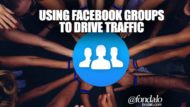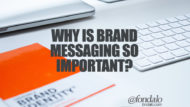With nearly 62% of consumers stating that social media has “no influence at all” on their purchasing decisions (Gallup), marketers are faced with substantial hurdles in an ever-increasingly noisy digital landscape. This challenge is further amplified by a CMO Council study showing that only 5 percent of brands feel they are extremely effective at creating experiences that resonate with target audiences. In fact, most marketers are currently forced to put more resources toward their digital and social efforts, just to maintain their current returns. I believe this gap will continue to widen for larger brands, but smaller more nimble retailers that get creative and deploy proper resources could end up being the big winner.
Today’s social and integrated marketers are at a crossroads of the digital marketing age. Let’s call it “eat or be eaten.” What I mean by that is the sheer amount of noise volume, changing consumer behaviors as well as a rapidly changing social landscape requires expertise, experience and continued consumption of the latest information if an organization is going to keep up, let alone make measurable progress online. If we just take a look at the volume of posting marketers are competing with on the larger social networks.
How Much Noise Is There?
So what is the actual social media posting volume? Gallup reports that in a single day,
- Facebook users post 4.75 billion items of content
- Twitter users send 400 million tweets
- Instagram users “like” 1.2 billion photos
- YouTube users watch 4 billion videos
If the amount of content being posted, shared and engaged with by millions of consumers across all demographic groups isn’t enough, you need to consider that 72% of U.S. adults use these social networks and the majority of them do several times a day. If this doesn’t scare you into making well thought out changes that result in a more strategic and integrated marketing program, I’m not sure anything ever will. The point is this… More than ever before marketers are required to develop multi-channel strategies that take into account the ever-changing digital marketing environment and the volume of noise they must break through.
Now before you think to yourself “We are not a big brand” or “I am just a one person marketer” and move on to the next carbon-copy “How-to blog”, you need to know this affects you also. In fact, small and medium businesses are going to see the pressure of these new “normal” statistics even more so than the big brands. Why? Because big brands can weather bigger storms, longer and have a bigger runway to make adjustments. Most SMB’s and those reading this post do not!
Four Things Brands Must Do Now
1 Change Thinking – How consumers use social media is changing. They are frequently creating their own path to purchases and are less influenced by media at the time they ultimately buy. Getting into the purchase process early, and at the research phase is now a must. Be part of their investigation and information gathering process early on. This all requires a different mental focus.
“Today’s social media requires marketers to think early intervention, instead of direct response advertising.”
~ @fondalo
2 Research – The better you understand the social behavior of your target audience, what they like and how they traverse the social graph, the better you will be able to fit into their purchase process. Proper research requires a lot of time and resources. It is not something that can be done with haste if you want to get the data you really need to be effective.
Every market segment and demographic group is going to be very different. You’ll need to take the time to dig deep and really understand your audience, where they hang out, what they are into and the way they make purchases.
3 Integrate, Integrate, Integrate – “Some 66% of engagement leaders say that their content and commerce touch-points and strategies are highly and tightly integrated“(CMO Council ). The days of digital marketing silos that segment various marketing into stand alone functions are over. To be really effective today, you are going to have to integrate all of your on and offline efforts into a unified strategy.
Digital marketing today requires innovative content and well thought out pathways that lead your customers down a specific path. This incorporates website, blog, all social accounts, SEM, social ads, unified messaging, landing pages and optimized conversion funnels. This goes for big brands, all the way down to the small local restaurant.
Does this sound complicated? To most SMB’s and individual marketers it probably does. But understand that hanging a shingle on a domain and posting promotional content to social media will have diminishing returns from now on. The social graph is changing and you have to as well.
4 Create, Create, Create – Content creation used to be a luxury to larger brands or those more creative small and medium-sized marketers. That is no longer the case.
The top marketers have fully embraced the importance of the digital experience and its ability to shape and influence customers. In fact almost half of them believe digital experiences deliver a more compelling customer experience. What’s even more impressive is that 40% believe it makes it easier for customers to consume and share content that will heighten credibility, trust and authority. (CMO Council )
Unique and engaging content that will stand out from the noise is the new normal requirement for digital marketers. Everything from blog content, graphics and even video that is strategically placed for multi-channel discovery and consumption is now the partial differentiation point that captures the consumer.
If consistently creating all types of content isn’t enough, marketers also need to ensure that the content they are creating fits within the buying cycle that consumers follow within their target audience. To be effective at capturing the attention of consumers and ultimately the sale, marketers must develop ways to establish a position earlier in the
customer purchase journey. Brands should focus on creating customer experiences that are inline with how their prospects are shopping for their products, and not just pointing consumers to buy when they are really seeking
inspiration or information. The digital path to buying is no longer about the click to ‘buy’ button, but involves an intricate process that incorporates time and various digital platforms that funnel engagement and information to the ultimate purchase.
There is a substantial and widening gap between those getting results in combined content and social media marketing. Those that see these changes and react to them now will reap untold rewards. Those that ignore the changing digital landscape will be forced to do so later, and that may potentially be too late for many.







Timely and provocative article Robert. Personally I like that the “quick fix” of social media marketing is changing and that individuals and brands must re-think how they engage with their audience.
I read this as I am developing a social media marketing retreat hosted in my area of Colorado. It will one of the articles I share with my participants, as we discuss the shifting sands of online and offline marketing and how a solid foundation of understanding the new consumer as well the underlying essence of ones business is so crucial before even a single tweet is posted.
Thanks for this Robert!
So glad you found it helpful Deborah! I appreciate the kind thoughts.
So glad you mentioned content. Content, content, content. :) I try to educate my clients on this, and they’re initially on board until they realize that creating unique and interesting content that actually adds value takes….time. And work. And energy. They usually fall off that wagon after a few months. Thanks for posting this, I’ll definitely be sharing!
Content is where everything starts Sheila. Glad you liked the post!
Excellent article and great timing. My social media efforts have been fairly consistent but I don’t think they are strong enough. This is a checklist I can use to make sure I’m hitting it from all angles.
Glad it was helpful Desiree! Consistency is the most overlooked item that drives a social accounts success…
Great article. Super important for us on out Italian Lifestyle strategy is content and engagement via Social Media.
Great blog. I read it as part of Coursera’s Social Media Marketing Specialization course by Northwestern University, and found it very informative. I am trying to develop digital marketing strategies for a. my business and b. for a not-for-profit involved in community development, that I head. My dilemma is, should I develop separate strategies for each? Should I develop a social media persona that integrates both of these passions of mine? I seek to transform entrepreneurial ideas into real social impact in communities. Welcome your and other’s inputs.
Ravi,
There are a lot of moving parts, specifics and details that are involved and it is really impossible to give proper advice without diving deep. Strategy for digital marketing should not be gut or emotion decision based, but data and knowledge driven if it is going to be effective. What you need to know is that the proper strategy and foundation at the beginning means everything. Not having it in place will send you months or even years chasing your tail.
If you need additional assistance, feel free to click the link on the right of the blog section to schedule consulting time.
Interesting. I liked the point about – what is customer seeking – information, inspiration or your product? So, if putting promotional content on social media is passe, it will be quite interesting to see how the giants like FB and twitter will push sponsored content.
We are driving an educational startup and trying to learn the ropes of navigating in the digital maze. Brick and mortar is a closed door, expensive route. Digital is so much of crowd….in the cloud….Challenges galore…
It’s not that it’s passe, it’s that it needs to be earned. You earn the right to pitch your stuff in social media. Sponsored content is not social media marketing, it’s advertising. The expectation is that it is advertising, not relationship building. Two different things.